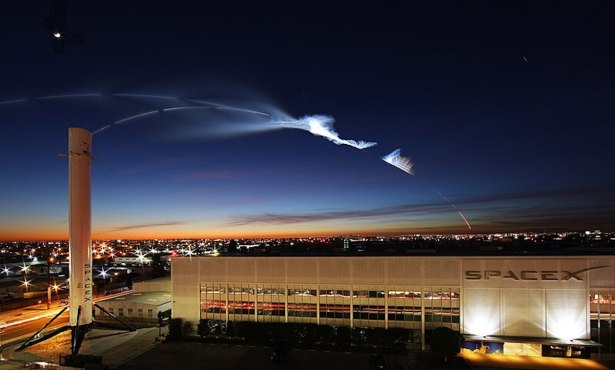EDC Declares Orcutt Oilfields Contaminated Drinking Water Wells
Cites USGS Report on Eve of ERG Hearing

A presentation by the U.S. Geological Survey to California water boards has surfaced that reveals contamination in the groundwater around the Orcutt oilfield, the Environmental Defense Center in Santa Barbara claims. The advocacy group released the information on Tuesday, stating that “federal scientists found evidence of oil-field fluids in groundwater underlying the nearby Orcutt oil field.” The February presentation by USGS hydrologist Robert Anders was a preliminary report that described the oil field as straddling both the Santa Maria and the San Antonio groundwater basins.
The wells had been used for steam injection and acidizing by Pacific Coast Energy Corporation for more than a decade, the EDC wrote in a press release, but its application to expand the wells had been denied by the county in 2016. “We weren’t even aware of groundwater contamination back then,” said Alicia Roessler, an attorney with EDC. “It would have been even worse if the county had approved the project.” Based on this information, the EDC has asked Planning Commission staff to prepare a notice of denial of another oil company’s request to expand its wells in Cat Canyon — a notice of approval is already part of the paperwork — part of EDC’s efforts on behalf of Los Padres Sierra Club and Santa Barbara County Action Network to defeat ERG oil company’s attempted expansion.
Wednesday morning’s ERG hearing was originally simply to postpone the matter until August as the oil company had asked for more time to prepare its application to develop 233 additional steam-injection wells in Cat Canyon. Those wells sit above the south end of the Santa Maria groundwater basin, just north of the San Antonio basin. In the meantime, the EDC had received word of the video from an anonymous source, Roessler said. It had also been finalizing two years of work combing through ERG documents received in a Freedom of Information Act request for the Wednesday hearing. Five oil spills were documented and eight that escaped secondary containment, including one wholesale spraying of nearby oak trees and hillsides, wildfires, and the death of an oil worker. The Environmental Defense Center alleges that 47 of ERG’s existing wells have injected “toxic wastewater” from oil operations into the “freshwater aquifer” over the past nine years.
The USGS report was preliminary information in advance of a full report later this year, said Anders. The initial indication is that four of 16 wells sampled in Orcutt showed contamination by oil-field fluids and produced, or waste, water. He also explained that methane was mixed in two of them, indicating possible migration of gases through faults underground; methane can also come from other organic sources. Upward flow of contaminants was possible — drinking water aquifers lie above oil-bearing strata — though more test wells needed to be sampled to know more, he said.
The potential pathways of contamination included the millions of barrels of waste disposed down wells within 1,600 to 4,000 feet of the contaminated wells between 1977 and 2017 and historic surface ponds. In addition to faults, Anders said, leaky wells and well bores could have allowed flow across confining layers. (The video is posted here: https://youtu.be/Hi5Mb_6CFWI )
The February presentation to the State Water Resources Control Board included information about similar contamination found in Kern and Ventura counties. On April 9, 2019, the Board of Supervisors in Ventura voted for a moratorium on all steam injection projects near groundwater supplies.




You must be logged in to post a comment.